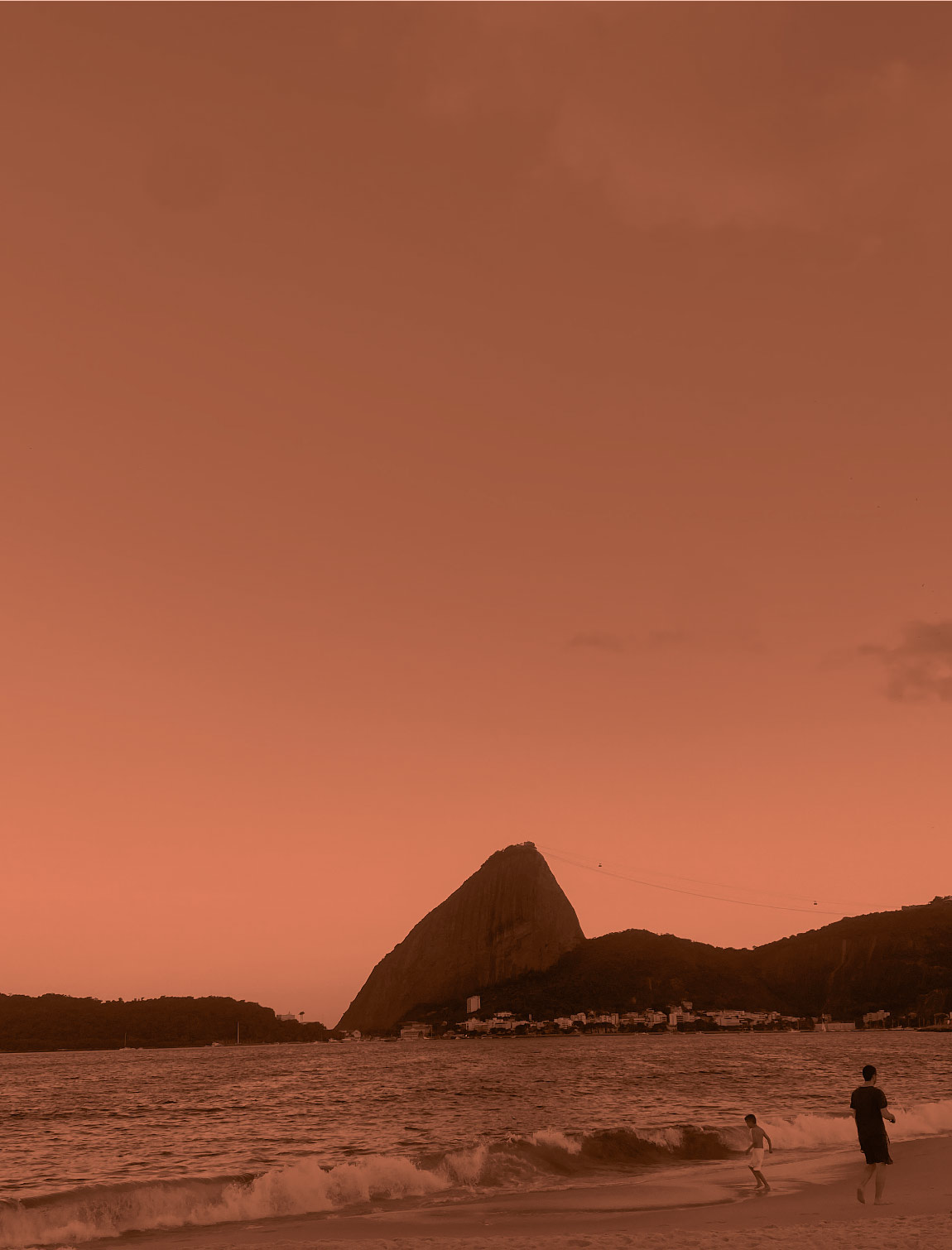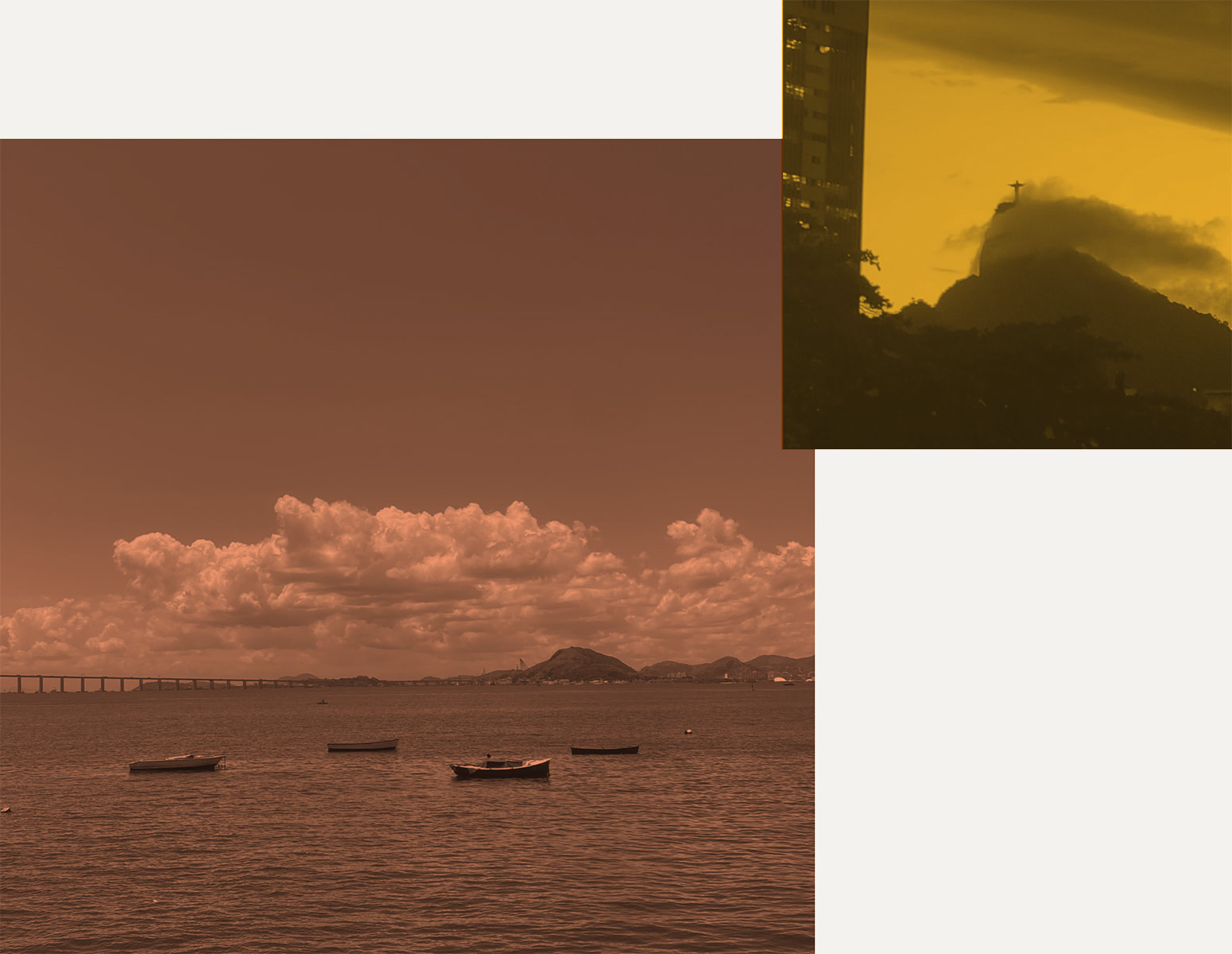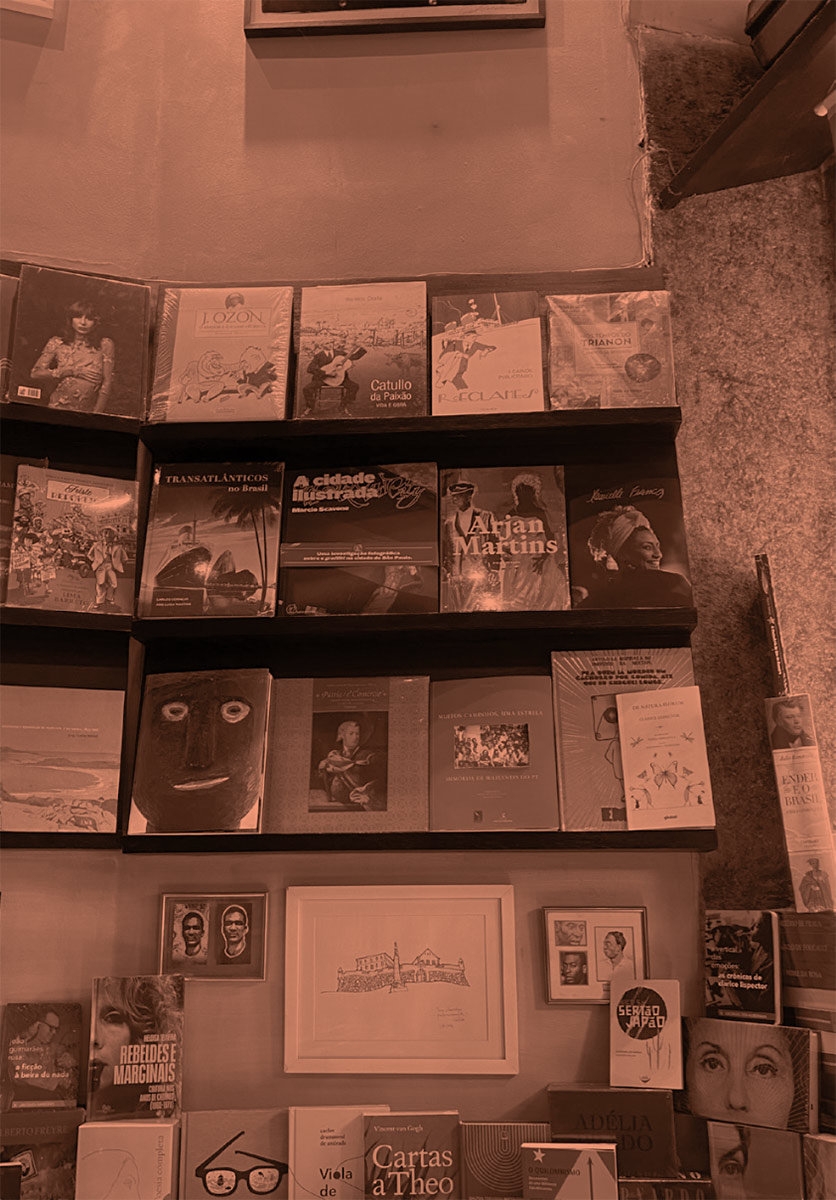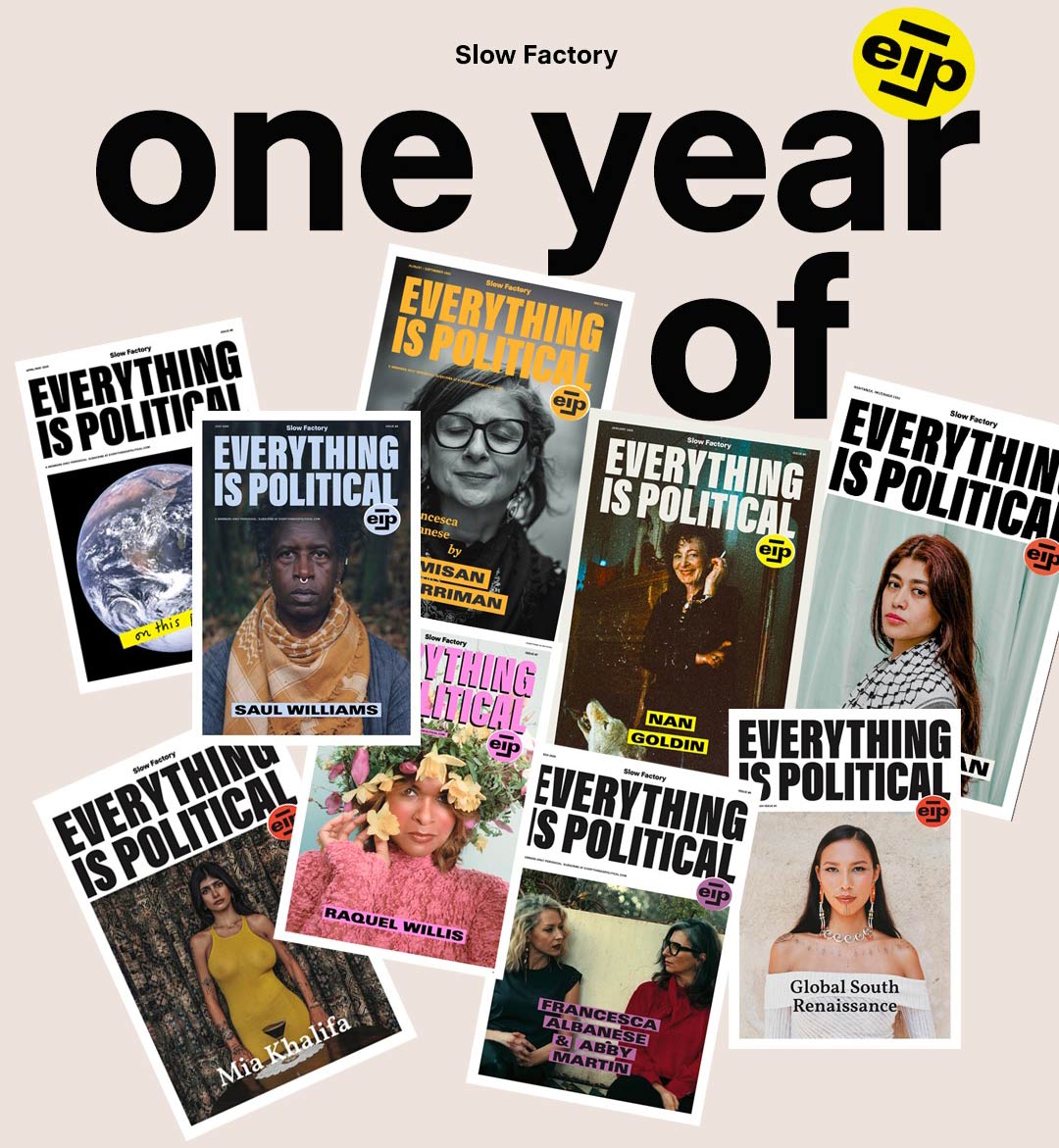Digital & Print Membership
Yearly + Receive 8 free printed back issues
$420 Annually
Monthly + Receive 3 free printed back issues
$40 Monthly
Seas Remember
Black Muslim Resistance Across the Americas

During the transatlantic slave trade, enslaved African Muslims were brought to the Americas, where they became known for uprisings. Charles V of Spain once tried to exclude “slaves suspected of Islamic learnings” from the Americas after the earliest recorded rebellion on Christmas Day, 1522. He blamed their behavior on “radical ideology.” However, the decree was not effective and enslaved African Muslims continued to foment revolution. In Haiti, pre-Revolution maroon leader Francois Macandal organized slaves to make poison, which was used to kill slaveholders and those assisting them. He was so notorious that poison was briefly dubbed “Macandal.”’ During slavery, Islam had a significant presence; the estimate is that fifteen to thirty percent, or as many as 600,000 to 1.2 million, slaves in antebellum America were Muslim. And often, they were the ones being watched the most.
Andrew Lawler writes in Smithsonian Magazine “20 enslaved Muslim Africans used machetes to attack their Christian masters on the island of Hispaniola, then governed by the son of Christopher Columbus. The assailants, condemned to the grinding toil of a Caribbean sugar plantation, killed several Spanish and freed a dozen enslaved Native Americans in what was the first recorded slave revolt in the New World.”
When I read of Bahia’s rebellions, I thought of the rising costs of food, the indignities of hunger, and how economic violence creates ripe conditions for resistance. These enslaved Muslims resisted not just with machetes but with the unyielding conviction that their spiritual and cultural legacies would persevere.
The parallels are inescapable. Rising inflation, the spiraling cost of living—today’s struggles echo theirs, though with new masks. The historical scaffolding remains the same.
To understand Muslims in Brazil is to understand a history of resilience. The Malê Revolt of 1835 in Bahia was the largest slave rebellion in Brazil. Led by African Muslims, the uprising had significant nationwide repercussions. Although short-lived, it led to increased efforts by Brazilian authorities to suppress the African Muslim community. João José Reis’s research into the Malê Revolt of 1835 anchors this history in its rightful place—not as footnotes but as the marrow of Brazil’s past.
In Rio, life announces itself in gesture, in rhythm. It seduces not just with its beauty but its contrasts. The city itself was conspiring to remind me of all that resists easy categorization. Flamengo Beach, with its languid waves and rocky sands, became my office, a place to sit with the histories I had read and the futures I was watching unfold. There is something about sitting in the presence of the vastness of the ocean that recalibrates what seems possible. If Bahia’s Muslims could resist the machinery of slavery and empire, what might we reimagine in the face of our own tyrannies?

The ocean, of course, remembers everything. Flamengo’s tides lapped at my feet as I sat and thought of Bahia, of the journeys that brought Muslims to these shores, of the rebellions that marked their arrival. Water is the ultimate witness, carrying the residue of ships and shackles, prayers and revolts. It was here, between the anxiety over my research and the joy of sunlit stillness, that the threads began to tangle: the historical with the contemporary.
In North America, early forms of surveillance targeting Black Muslims were deeply tied to the suppression of Islam among enslaved Africans. On American plantations, the fear of rebellion—fueled by stories of African Muslim uprisings in Spain’s South American colonies—led to harsh restrictions on religious practices, aiming to break both faith and spirit. Evidence of this can be seen in the Ben Ali diary from Sea Island, Georgia, which chronicles how enslaved African Muslims observed Ramadan under constant watch. Despite the dangers, they gathered for meals and prayers, finding ways to hold onto their faith. However, oppressive laws like Virginia’s Slave Code of 1723, which deemed the assembly of five or more enslaved people illegal, sought to stamp out not just Islam but any form of resistance or community building. Similar laws existed across the South, turning religion into an act of defiance.
This legacy of surveillance expanded in the 20th century, with the FBI scrutinizing Black Muslim organizations like the Moorish Science Temple, accusing them of promoting anti-capitalist and revolutionary ideologies. FBI files, divided by regional offices in cities like Baltimore, Chicago, and Philadelphia, reveal how Black Islam was associated with foreign threats—Marxism, anti-imperialism, and even pro- Japanese sentiment—branding it as un-American.
By the 1960s, Islamophobia became a key weapon in the FBI’s arsenal. Through programs like COINTELPRO, the agency launched aggressive campaigns to undermine the Nation of Islam, Black nationalist movements, and New Left groups. Framing Islam as a threat to national security, the FBI used smear tactics, infiltration, and disruption to silence dissent, cementing surveillance as a tool of oppression against Black Muslims and civil rights leaders alike.
Contemporary discourse on surveillance, and the racialization of Muslims begins on 9/11 but this panoptical, state sanctioned surveillance of Black people did not need a rise in technologies to exist.
Technology does not account for the specific scrutiny that enslaved Black Muslims faced because of their religious identity and disposition for dissent, the resources that the FBI and other government agencies flooded into specifically surveilling Black Muslims, and even more topical discussions about surveillance and Muslims fails to account for Black Muslims, immigrant and Black American alike.

Today, Black Muslims make up an estimated 35–42 percent of all American Muslims. Though Islam is often imagined as a primarily Arab religion in the United States, Black Muslims outnumber both Arab and South Asian Muslims and are the fastest growing demographic of the faith’s domestic population.
The legacy of the Malê Revolt continues to be felt in Bahia today. The Afro-Bahian musical and cultural group Malê Debalê carries a message of social, cultural, and political resistance, highlighting issues such as apartheid, police brutality, and political inequalities in Brazil.
The story of Islam in Brazil continued to unfold with later waves of immigration, primarily from the Middle East and South Asia. These immigrants have contributed to the growth of the Brazilian Muslim population, which is now estimated to be around 200,000, making it the largest Muslim community in Latin America. This is similar to the story of Islam in the United States. The demographic composition of Brazilian Muslims is diverse, reflecting the country’s broader cultural and ethnic diversity. While the exact number of Muslims in Brazil is a subject of debate, ranging from 37,000 to over a million, the community’s presence and influence have been undeniable throughout the nation’s history.
Brazil is now the world’s largest exporter of halal protein, catering to the growing demand from Muslim consumers worldwide. The cultural and culinary integration of Muslims in Brazil is a testament to the country’s diversity and the enduring influence of the Arab and Muslim communities, and similar integrations can be seen across the Americas, in Mexico, the United States, and in Canada. As the Muslim presence in the Americas continues to grow, it will undoubtedly shape this hemisphere’s rich traditions and flavors for generations to come.
When I first landed in Rio de Janeiro, I saw a Muslim family— mother, father, and child—walking in the central part of Rio. Seeing them, veiled and proud, was like encountering a living seam threading the past into the present. Watching them, I saw the quiet revolutions waged in every gesture—the swing of a hijab, the laughter of a child, the gaze that meets the world unflinching.
Diaspora, I’ve learned, is not a fixed identity but a constant becoming. It is as much about what is preserved as what is reconstructed in the gaps. When we can tie together these histories, we can better understand how our stories not only overlap, but can’t exist without one another. Our struggles, much like our histories, are interconnected.
Topics:
Filed under:
Location:
{
"article":
{
"title" : "Seas Remember: Black Muslim Resistance Across the Americas",
"author" : "Najma Sharif",
"category" : "essays",
"url" : "https://everythingispolitical.com/readings/black-muslim-resistance-americas",
"date" : "2024-12-11 14:33:00 -0500",
"img" : "https://everythingispolitical.com/uploads/black-muslim-thumbnail.jpg",
"excerpt" : "",
"content" : "During the transatlantic slave trade, enslaved African Muslims were brought to the Americas, where they became known for uprisings. Charles V of Spain once tried to exclude “slaves suspected of Islamic learnings” from the Americas after the earliest recorded rebellion on Christmas Day, 1522. He blamed their behavior on “radical ideology.” However, the decree was not effective and enslaved African Muslims continued to foment revolution. In Haiti, pre-Revolution maroon leader Francois Macandal organized slaves to make poison, which was used to kill slaveholders and those assisting them. He was so notorious that poison was briefly dubbed “Macandal.”’ During slavery, Islam had a significant presence; the estimate is that fifteen to thirty percent, or as many as 600,000 to 1.2 million, slaves in antebellum America were Muslim. And often, they were the ones being watched the most.Andrew Lawler writes in Smithsonian Magazine “20 enslaved Muslim Africans used machetes to attack their Christian masters on the island of Hispaniola, then governed by the son of Christopher Columbus. The assailants, condemned to the grinding toil of a Caribbean sugar plantation, killed several Spanish and freed a dozen enslaved Native Americans in what was the first recorded slave revolt in the New World.”When I read of Bahia’s rebellions, I thought of the rising costs of food, the indignities of hunger, and how economic violence creates ripe conditions for resistance. These enslaved Muslims resisted not just with machetes but with the unyielding conviction that their spiritual and cultural legacies would persevere.The parallels are inescapable. Rising inflation, the spiraling cost of living—today’s struggles echo theirs, though with new masks. The historical scaffolding remains the same.To understand Muslims in Brazil is to understand a history of resilience. The Malê Revolt of 1835 in Bahia was the largest slave rebellion in Brazil. Led by African Muslims, the uprising had significant nationwide repercussions. Although short-lived, it led to increased efforts by Brazilian authorities to suppress the African Muslim community. João José Reis’s research into the Malê Revolt of 1835 anchors this history in its rightful place—not as footnotes but as the marrow of Brazil’s past.In Rio, life announces itself in gesture, in rhythm. It seduces not just with its beauty but its contrasts. The city itself was conspiring to remind me of all that resists easy categorization. Flamengo Beach, with its languid waves and rocky sands, became my office, a place to sit with the histories I had read and the futures I was watching unfold. There is something about sitting in the presence of the vastness of the ocean that recalibrates what seems possible. If Bahia’s Muslims could resist the machinery of slavery and empire, what might we reimagine in the face of our own tyrannies?The ocean, of course, remembers everything. Flamengo’s tides lapped at my feet as I sat and thought of Bahia, of the journeys that brought Muslims to these shores, of the rebellions that marked their arrival. Water is the ultimate witness, carrying the residue of ships and shackles, prayers and revolts. It was here, between the anxiety over my research and the joy of sunlit stillness, that the threads began to tangle: the historical with the contemporary.In North America, early forms of surveillance targeting Black Muslims were deeply tied to the suppression of Islam among enslaved Africans. On American plantations, the fear of rebellion—fueled by stories of African Muslim uprisings in Spain’s South American colonies—led to harsh restrictions on religious practices, aiming to break both faith and spirit. Evidence of this can be seen in the Ben Ali diary from Sea Island, Georgia, which chronicles how enslaved African Muslims observed Ramadan under constant watch. Despite the dangers, they gathered for meals and prayers, finding ways to hold onto their faith. However, oppressive laws like Virginia’s Slave Code of 1723, which deemed the assembly of five or more enslaved people illegal, sought to stamp out not just Islam but any form of resistance or community building. Similar laws existed across the South, turning religion into an act of defiance.This legacy of surveillance expanded in the 20th century, with the FBI scrutinizing Black Muslim organizations like the Moorish Science Temple, accusing them of promoting anti-capitalist and revolutionary ideologies. FBI files, divided by regional offices in cities like Baltimore, Chicago, and Philadelphia, reveal how Black Islam was associated with foreign threats—Marxism, anti-imperialism, and even pro- Japanese sentiment—branding it as un-American.By the 1960s, Islamophobia became a key weapon in the FBI’s arsenal. Through programs like COINTELPRO, the agency launched aggressive campaigns to undermine the Nation of Islam, Black nationalist movements, and New Left groups. Framing Islam as a threat to national security, the FBI used smear tactics, infiltration, and disruption to silence dissent, cementing surveillance as a tool of oppression against Black Muslims and civil rights leaders alike.Contemporary discourse on surveillance, and the racialization of Muslims begins on 9/11 but this panoptical, state sanctioned surveillance of Black people did not need a rise in technologies to exist.Technology does not account for the specific scrutiny that enslaved Black Muslims faced because of their religious identity and disposition for dissent, the resources that the FBI and other government agencies flooded into specifically surveilling Black Muslims, and even more topical discussions about surveillance and Muslims fails to account for Black Muslims, immigrant and Black American alike.Today, Black Muslims make up an estimated 35–42 percent of all American Muslims. Though Islam is often imagined as a primarily Arab religion in the United States, Black Muslims outnumber both Arab and South Asian Muslims and are the fastest growing demographic of the faith’s domestic population.The legacy of the Malê Revolt continues to be felt in Bahia today. The Afro-Bahian musical and cultural group Malê Debalê carries a message of social, cultural, and political resistance, highlighting issues such as apartheid, police brutality, and political inequalities in Brazil.The story of Islam in Brazil continued to unfold with later waves of immigration, primarily from the Middle East and South Asia. These immigrants have contributed to the growth of the Brazilian Muslim population, which is now estimated to be around 200,000, making it the largest Muslim community in Latin America. This is similar to the story of Islam in the United States. The demographic composition of Brazilian Muslims is diverse, reflecting the country’s broader cultural and ethnic diversity. While the exact number of Muslims in Brazil is a subject of debate, ranging from 37,000 to over a million, the community’s presence and influence have been undeniable throughout the nation’s history.Brazil is now the world’s largest exporter of halal protein, catering to the growing demand from Muslim consumers worldwide. The cultural and culinary integration of Muslims in Brazil is a testament to the country’s diversity and the enduring influence of the Arab and Muslim communities, and similar integrations can be seen across the Americas, in Mexico, the United States, and in Canada. As the Muslim presence in the Americas continues to grow, it will undoubtedly shape this hemisphere’s rich traditions and flavors for generations to come.When I first landed in Rio de Janeiro, I saw a Muslim family— mother, father, and child—walking in the central part of Rio. Seeing them, veiled and proud, was like encountering a living seam threading the past into the present. Watching them, I saw the quiet revolutions waged in every gesture—the swing of a hijab, the laughter of a child, the gaze that meets the world unflinching.Diaspora, I’ve learned, is not a fixed identity but a constant becoming. It is as much about what is preserved as what is reconstructed in the gaps. When we can tie together these histories, we can better understand how our stories not only overlap, but can’t exist without one another. Our struggles, much like our histories, are interconnected."
}
,
"relatedposts": [
{
"title" : "What We Can Learn from the Inuit Mapping of the Arctic",
"author" : "William Rankin",
"category" : "excerpts",
"url" : "https://everythingispolitical.com/readings/inuit-mapping-arctic",
"date" : "2025-12-02 12:49:00 -0500",
"img" : "https://everythingispolitical.com/uploads/Cover_EIP_Template-Inuit_Map.jpg",
"excerpt" : "This excerpt is from RADICAL CARTOGRAPHY by William Rankin, published by Viking, an imprint of Penguin Publishing Group, a division of Penguin Random House, LLC. Copyright © 2025 by William Rankin.",
"content" : "This excerpt is from RADICAL CARTOGRAPHY by William Rankin, published by Viking, an imprint of Penguin Publishing Group, a division of Penguin Random House, LLC. Copyright © 2025 by William Rankin.In 1994, the Berkeley geographer Bernard Nietschmann made a famous claim about the power of mapping in the global struggle for Indigenous rights. It was a claim about how the tools of historical oppression could be reclaimed by the oppressed: “More Indigenous territory has been claimed by maps than by guns. This assertion has its corollary: more Indigenous territory can be defended and reclaimed by maps than by guns.” The idea was that by putting themselves on the map—documenting their lives and their communities—Indigenous peoples would not be so easy to erase. Nietschmann was working in Central America, often heroically, during a time of violence and displacement, and he inspired a generation of researchers and activists interested in flipping the power structure of state-centric cartography on its head.But despite the spread of bottom-up mapping projects in the past 30 years, perhaps the most successful example of Indigenous mapping actually predates Nietschmann’s call to action. Just one year prior, in 1993, the Inuit of northern Canada signed a treaty creating the territory of Nunavut—the largest self-governing Indigenous territory in the world—and mapping was central to both the negotiation and the outcome. It remains one of the rare cases of Indigenous geographic knowledge decolonizing the world map.So why hasn’t the Inuit project been replicable elsewhere, despite decades more work on Indigenous mapping? The answer lies in the very idea of territory itself, and in particular in one of the most threatened parts of the Inuit landscape today: ice. The winter extent of Arctic sea ice reached a record low earlier this year, and a new low is predicted for the winter ahead. Yet the shrinking ice isn’t just an unshakable sign of Arctic warming; it’s also a poignant reminder of what Nietschmann got right—and what he missed—about the relationship between cartography and power. In particular, it shows how Inuit conceptions of space, place, and belonging are rooted in a dynamic, seasonal geography that’s often completely invisible on Western-style maps.The story begins in the 1970s, when the young Inuit leader Tagak Curley, today considered a “living father” of Nunavut, hired the Arctic anthropologist Milton Freeman to lead a collaborative mapping project of unprecedented scope and ambition. Freeman taught at McMaster University about an hour outside Toronto; he was white, but his wife, Mini Aodla Freeman, was Inuit (she was a translator and later a celebrated writer). Freeman assembled a team of other anthropologists and Arctic geographers—also white—to split the mapping into regions. They called their method the “map biography.” The goal was to capture the life history of every Inuit hunter in cartographic form, recording each person’s memories of where, at any point in their life, they had found roughly three dozen species of wildlife—from caribou and ptarmigan to beluga, narwhal, and seaweed. Each map biography would be a testimony of personal experience.After the mapping was split into regions, about 150 field-workers—almost all Inuit—traveled between 33 northern settlements with a stack of government-issued topographic maps to conduct interviews. Each hunter was asked to draw lines or shapes directly on the maps with colored pens or pencils. The interviewers stayed about 10 weeks in each settlement, visiting most hunters in their own homes, and the final participation rate was an astonishing 85 percent of all adult Inuit men. They collected 1,600 biographies in total, some on maps as large as 10 feet square.Then came the cartographers, back in Ontario: one professor and a team of about 15 students. The first map below (Figure 1) shows how the individual map biographies were transformed into summary maps, one for each community. For every species, the overlap of all hunters’ testimony became a single blob, and then blobs for all species were overlaid to make a complete map. The second map (Figure 2) shows one of the finished atlas pages along the Northwest Passage. The immediate impression is that the Arctic is in no way an empty expanse of barren land and unclaimed mineral riches. It is dense with human activity, necessary for personal and collective survival. The community maps combined to show almost uninterrupted Inuit presence stretching from northern Labrador to the Alaska border.Figure 1: Top left is a simplified version of a “map biography” from a single Inuit hunter, showing his birthplace and the places he hunted caribou, fox, wolf, grizzly bear, moose, and fish at various points in his life. (The original biography would have been drawn over a familiar government-issued topographic map.) The other three maps show how multiple biographies were then combined into patterned blobs for all hunters and all species. (Map courtesy of William Rankin/ Penguin Random House LLC.)Figure 2: A two-page spread from the finished atlas showing the seven kinds of animals hunted from the settlements of Igloolik and Hall Beach, in an area about 500 by 300 miles: caribou, polar bear, walrus, whale, fish, seal, and waterfowl. (Because of the large number of individual species recorded in the map biographies, some species were grouped together in the final maps.) The blobs are a strong, even overpowering figure atop an unusually subtle ground. Notice in particular how difficult it is to distinguish land and water areas, since the dark shading extends beyond coastlines even for individual species. This map in fact includes the Northwest Passage—the famous sea route around the tip of North America—but the crucial Fury and Hecla Strait (named after the two British ships that first learned of, but did not navigate, the passage in 1822) is almost entirely obscured. (Map courtesy of William Rankin/ Penguin Random House LLC.)Nothing about the cartography was meant to be subversive—or even controversial. For the cartographers, the only message was that the Inuit hunted a variety of species over large areas. But look again at the finished map in Figure 2. Yes, a foreground is layered over a background in the usual way, but the visual argument is strikingly different from a typical layered map in, say, a census atlas, where the foreground data doesn’t stray beyond crisp pre-existing borders. Here, in contrast, even the basic distinction between land and water is often obscure. The maps’ content is the facts of species and area; the maps’ argument is that Inuit culture is grounded in a substantially different understanding of territory than the one Western cartography was designed to show.As a result, this new atlas shifted the negotiations between the Inuit and the Canadian government decisively. Not only did the maps provide a legal claim to the Inuit-used land, documenting 750,000 square miles—an area the size of Mexico—but also a claim to the sea, showing an additional 325,000 square miles offshore.It took many years for the full implications to play out, but the erosion of the land–water boundary became central to the Inuit vision. At the time, wildlife on land was managed by the regional Northwest Territories government, while offshore marine species were the responsibility of centralized federal agencies. The Inuit used the atlas to win agreement for a new agency with equal responsibility over both. At the same time, the Inuit also improved their position by offering their offshore claims as evidence the Canadian government would use—not just in the 1980s, but even as recently as 2024—to resist foreign encroachment in the Northwest Passage. The final agreement in 1993 granted the Inuit $1.15 billion in cash, title to about 17 percent of the land in the “settlement area,” representation on several new management agencies, a share of all natural-resource revenue, broad hunting and fishing rights, and a promise that the territory of Nunavut would come into being on April 1, 1999.It’s easy to count this project as a success story, but it’s also important to remember that it depended both on the government’s own interest in negotiation and on the willingness of Indigenous peoples, or at least their leadership, to translate their sense of space onto a map, solidifying what had previously been fluid. It also meant abandoning claims to ancestral lands that had not been used in living experience and provoking new boundary disputes with neighboring, and previously amicable, Indigenous groups. These tradeoffs have led some scholars to critique mapping as only “drawing Indigenous peoples into a modern capitalist economy while maintaining the centrality of state power.” But for the Inuit, the alternatives seemed quite a bit worse.With the more recent proliferation of Indigenous mapping initiatives elsewhere—in Latin America, Africa, and Asia—the tradeoffs have been harder to evaluate. Most governments have shown little interest in addressing Indigenous claims, and when bottom-up mapping has been pushed instead by international nonprofits interested in environmental conservation, the downsides of mapping have often come without any of the upsides.Yet it’s not just the attitude of the state that’s been different; it’s also the cartography. In nearly all these other cases, the finished maps have shown none of the territorial inversion of the Inuit atlas. Instead, Indigenous knowledge is either overlaid on an existing base map in perfectly legible form, or it’s used to construct a new base map of a remarkably conventional sort, using the same visual vocabulary as Western maps.Did the Inuit project just show the data so clearly that its deeper implications were immediately apparent? No, not really, since the great irony here is that the cartographers were in fact quite dissatisfied. Follow-up surveys reached the conclusion that the atlas was only “moderately successful” by their usual mapmaking standards.The Inuit atlas was a kind of happy accident—one that doesn’t conform to any of the usual stories about Indigenous mapping, in Canada or elsewhere. The lesson here isn’t that maps should be as Indigenous as possible, or that they should be as orthodox as possible. These maps were neither. My take is simpler: the atlas shows that maps can, in fact, support alternative conceptions of space—and that showing space in a different way is crucial.The possibilities aren’t endless, but they’re broader than we might think. Plotting different sorts of data is a necessary step, but no less important are the relationships between that data and the assumptions of what lies below. For the Inuit, these assumptions were about land, water, and territory. These were in the background both visually and politically, and they were upstaged by an unexpectedly provocative foreground. The layers did not behave as they were meant to, and despite the tradeoffs, they allowed an Indigenous community to fight for their home and their way of life."
}
,
{
"title" : "Malcolm X and Islam: U.S. Islamophobia Didn’t Start with 9/11",
"author" : "Collis Browne",
"category" : "essays",
"url" : "https://everythingispolitical.com/readings/malcolm-x-and-islam",
"date" : "2025-11-27 14:58:00 -0500",
"img" : "https://everythingispolitical.com/uploads/life-malcolm-3.jpg",
"excerpt" : "",
"content" : "Anti-Muslim hate has been deeply engrained and intertwined with anti-Black racism in the United States for well over 60 years, far longer than most of us are taught or are aware.As the EIP team dug into design research for the new magazine format of our first anniversary issue, we revisited 1960s issues of LIFE magazine—and landed on the March 1965 edition, published just after the assassination of Malcolm X.The reporting is staggering in its openness: blatantly anti-Black and anti-Muslim in a way that normalizes white supremacy at its most fundamental level. The anti-Blackness, while horrifying, is not surprising. This was a moment when, despite the formal dismantling of Jim Crow, more than 10,000 “sundown towns” still existed across the country, segregation remained the norm, and racial terror structured daily life.What shocked our team was the nakedness of the anti-Muslim propaganda.This was not yet framed as anti-Arab in the way Western Islamophobia is often framed today. Arab and Middle Eastern people were not present in the narrative at all. Instead, what was being targeted was organized resistance to white supremacy—specifically, the adoption of Islam by Black communities as a source of political power, dignity, and self-determination. From this moment, we can trace a clear ideological line from anti-Muslim sentiment rooted in anti-Black racism in the 1960s to the anti-Arab, anti-MENA, and anti-SWANA racism that saturates Western culture today.The reporting leaned heavily on familiar colonial tropes: the implication of “inter-tribal” violence, the suggestion that resistance to white supremacy is itself a form of reverse racism or inherent aggression, and the detached, almost smug tone surrounding the violent death of a cultural leader.Of course, the Nation of Islam and Elijah Muhammad represent only expressions within an immense and diverse global Muslim world—spanning Morocco, Sudan, the Gulf, Iraq, Pakistan, Indonesia, and far beyond. Yet U.S. cultural and military power has long blurred these distinctions, collapsing complexity into a singular enemy image.It is worth naming this history clearly and connecting the dots: U.S. Islamophobia did not begin with 9/11. It is rooted in a much older racial project—one that has always braided anti-Blackness and anti-Muslim sentiment together in service of white supremacy, at home and abroad."
}
,
{
"title" : "The Billionaire Who Bought the Met Gala: What the Bezoses’ Check Means for Fashion’s Future",
"author" : "Louis Pisano",
"category" : "essays",
"url" : "https://everythingispolitical.com/readings/the-billionaire-who-bought-the-met-gala",
"date" : "2025-11-27 10:41:00 -0500",
"img" : "https://everythingispolitical.com/uploads/Cover_EIP_TBesos_MET_Galajpg.jpg",
"excerpt" : "On the morning of November 17, 2025, the Metropolitan Museum of Art announced that Jeff Bezos and Lauren Sánchez Bezos would serve as the sole lead sponsors of the 2026 Met Gala and its accompanying Costume Institute exhibition, “Costume Art”. Saint Laurent and Condé Nast were listed as supporting partners. To be clear, this is not a co-sponsorship. It is not “in association with.” It is the first time in the modern history of the gala that the headline slot, previously occupied by Louis Vuitton, TikTok, or a discreet old-money surname, has been handed to a tech billionaire and his wife. The donation amount remains undisclosed, but sources familiar with the negotiations place it comfortably north of seven figures, in line with the checks that helped the event raise $22 million last year.",
"content" : "On the morning of November 17, 2025, the Metropolitan Museum of Art announced that Jeff Bezos and Lauren Sánchez Bezos would serve as the sole lead sponsors of the 2026 Met Gala and its accompanying Costume Institute exhibition, “Costume Art”. Saint Laurent and Condé Nast were listed as supporting partners. To be clear, this is not a co-sponsorship. It is not “in association with.” It is the first time in the modern history of the gala that the headline slot, previously occupied by Louis Vuitton, TikTok, or a discreet old-money surname, has been handed to a tech billionaire and his wife. The donation amount remains undisclosed, but sources familiar with the negotiations place it comfortably north of seven figures, in line with the checks that helped the event raise $22 million last year.Within hours of the announcement, the Met’s Instagram post was overrun with comments proclaiming the gala “dead.” On TikTok and X, users paired declarations of late-stage capitalism with memes of the museum staircase wrapped in Amazon boxes. Not that this was unexpected. Anyone paying attention could see it coming for over a decade.When billionaires like Bezos, whose Amazon warehouses reported injury rates nearly double the industry average in 2024 and whose fashion supply chain has been linked to forced labor and poverty wages globally, acquire influence over prestigious institutions like the Met Museum through sponsorships, it risks commodifying fashion as a tool for not only personal but corporate image-laundering. To put it simply: who’s going to bite the hand that feeds them? Designers, editors, and curators will have little choice but to turn a blind eye to keep the money flowing and the lights on.Back in 2012, Amazon co-chaired the “Schiaparelli and Prada” gala, and honorary chair Jeff Bezos showed up in a perfectly respectable tux with then-wife MacKenzie Scott by his side and an Anna Wintour-advised pocket square. After his divorce from Scott in 2019, Bezos made a solo appearance at the Met Gala, signaling that he was becoming a familiar presence in fashion circles on his own. Of course, by that point, he already had Lauren Sánchez. Fast forward to 2020: print advertising was crumbling, and Anna Wintour co-signed The Drop, a set of limited CFDA collections sold exclusively on Amazon, giving the company a veneer of fashion credibility. By 2024, Sánchez made her Met debut in a mirrored Oscar de la Renta gown personally approved by Wintour, signaling that the Bezos orbit was now squarely inside the fashion world.Then, the political world started to catch up, as it always does. In January 2025, Sánchez and Bezos sat three rows behind President-elect Donald Trump at the inauguration. Amazon wrote a one-million-dollar check to Trump’s inaugural fund, and Bezos, once mocked by Trump as “Jeff Bozo,” publicly congratulated Trump on an “extraordinary political comeback.” By June 2025, Bezos and Sánchez became cultural and political mainstays: Sánchez married Bezos in Venice, wearing a Dolce & Gabbana gown Wintour had helped select. This landed Sánchez the digital cover of American Vogue almost immediately afterward. Wintour quietly handed day-to-day control of the magazine to Chloe Malle but kept the Met Gala, the global title, and her Condé Nast equity stake, cementing a new era of fashion power where money, influence, and optics are inseparable.Underneath all of it, the quiet hum of Amazon’s fashion machine continued to whirr. By 2024, the company already controlled 16.2 percent of every dollar Americans spent on clothing, footwear, and accessories—more than Walmart, Target, Macy’s, and Nordstrom combined. That same year, it generated $34.7 billion in U.S. apparel and footwear revenue that year, with the women’s category alone on pace to top $40 billion. No legacy house has ever had that volume of real-time data on what people actually try on, keep, or return in shame. Amazon can react in weeks rather than seasons, reordering winning pieces, tweaking existing ones, and killing unpopular options before they’re even produced at scale.Wintour did more than simply observe this shift; she engineered a soft landing by bringing Amazon in when it was still somewhat uncool and seen mostly as a discount retailer, lending it credibility when it needed legitimacy, and spending the last two years turning Sánchez from tabloid footnote to Vogue cover star. The Condé Nast sale rumors that began circulating in July 2025, complete with talk of Wintour cashing out her equity and Sánchez taking a creative role, have been denied by every official mouthpiece. But they have also refused to die, because the timeline is simply too tidy.The clearest preview of what billionaire ownership can do to a cultural institution remains Bezos’ other pet project, The Washington Post. Bezos bought it for $250 million in 2013, saved it from bankruptcy, and built it into a profitable digital operation with 2.5 million subscribers. Then, in October 2024, he personally blocked a planned editorial endorsement of Kamala Harris. More than 250,000 subscribers canceled in the following days. By February 2025, the opinion section was restructured around “personal liberties and free markets,” triggering another exodus and the resignation of editorial page editor David Shipley. Former executive editor Marty Baron called it “craven.” The timing, just months after Bezos began warming to the incoming Trump administration, was not lost on anyone. The story didn’t stop there: in the last few days, U.S. Vice President J.D. Vance revealed he had texted Bezos suggesting the hiring of a right-leaning Breitbart journalist, Matthew Boyle, to run the Post’s political coverage. This is a clear signal of how staffing decisions at a storied paper now sit within the same power matrix that funds the Met Gala and shapes culture, media, and politics alike. It’s a tangled, strategic web—all of Bezos’ making.It’s curious that, in the same 30-day window that the Trump DOJ expanded its antitrust inquiry into Amazon, specifically how its algorithms favor its own products over third-party sellers, including many fashion brands, the MET, a city-owned museum, handed the keys of its marquee event to the man whose company now wields outsized influence over designers’ fortunes and faces regulatory scrutiny from the administration he helped reinstall. This is not sponsorship; it’s leverage. Wintour once froze Melania Trump out of Vogue because she could afford to.But she cannot freeze out Sánchez or Bezos. Nor does she want to.So on the first Monday in May, the museum doors will open as they always do for the Met Gala. The carpet will still be red (or whatever color the theme demands). The photographs of celebrities posing in their interpretations of “Costume Art” will still break the internet. Andrew Bolton’s exhibition, roughly 200 objects tracing the dressed body across five millennia, displayed in the newly renamed Condé Nast Galleries, will still be brilliant. But the biggest check will come from the couple who already control 16 percent of America’s clothing spend, who own The Washington Post, and who sat three rows behind Trump at the inauguration. Everything else, guest list tweaks, livestream deals, shoppable moments, will flow from that single source of money and power. That is who now has the final word on the most influential night in American fashion."
}
]
}






